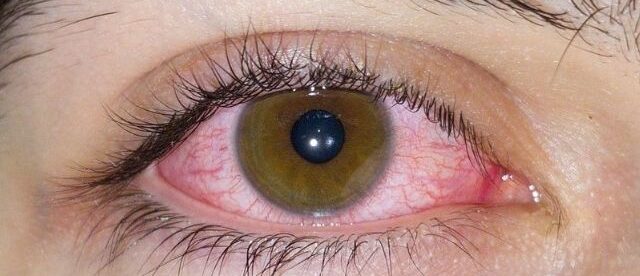Keratitis: Causes, Symptoms, and How to Protect Your Vision

Keratitis is an inflammatory condition that affects the cornea, which is the transparent front part of your eye that helps focus light. You might be wondering what happens with this condition – it can develop from infections caused by bacteria, viruses, fungi, or parasites, as well as from non-infectious factors like injury, wearing your contact lenses for too long, or environmental irritants that bother your eyes. If you don’t get it treated early, keratitis can lead to serious problems, including permanent vision issues. It’s super important to get medical help fast to avoid these risks.
Causes of Keratitis
Keratitis can be placed into two main groups: infectious or noninfectious.
Infectious Keratitis
This happens when microorganisms get into the cornea and trigger inflammation. The most common types you might encounter include:
- Bacterial keratitis – This type is usually linked to not cleaning your contact lenses properly, and it develops very quickly, requiring immediate antibiotic treatment to stop it from getting worse.
- Viral keratitis – Often caused by herpes simplex virus (HSV) or varicella-zoster virus (VZV), which can lead to infections that keep coming back and scarring on your cornea that affects your vision.
- Fungal keratitis – Common among people who come in contact with organic matter, like agricultural workers, or those who don’t use their contact lenses correctly.
- Parasitic keratitis (Acanthamoeba keratitis) – A rare but very serious type that’s connected to exposure to contaminated water, especially if you wear contact lenses.
Noninfectious Keratitis
This type comes from mechanical trauma, too much UV exposure, or underlying conditions like severe dry eye syndrome. Things that increase your risk include:
- Eye injuries – Scratches, foreign objects, or eye surgeries can damage your cornea.
- Prolonged contact lens use – Sleeping while wearing your lenses or not following the cleaning instructions increases your risk significantly.
- UV radiation exposure – Too much sun exposure, especially without proper UV-protective eyewear, can lead to photokeratitis, which is basically a sunburn of your cornea.
- Autoimmune conditions – Certain diseases, like rheumatoid arthritis, can add to corneal inflammation and make your situation worse.
Symptoms of Keratitis
Noticing symptoms early is very important to prevent complications. Common signs you might experience include:
- Eye pain and redness that won’t go away
- Increased sensitivity to light that makes it uncomfortable to be outdoors
- Blurred vision that interferes with daily activities
- Excessive tearing or discharge from the affected eye
- Difficulty keeping your eye open due to discomfort
Severe cases can develop corneal ulcers, which can result in vision loss if not treated promptly. Herpetic keratitis often shows up with distinctive branching lesions on your cornea, while fungal keratitis tends to develop more slowly but can be just as serious.
Diagnosing Keratitis
A thorough eye examination is necessary to confirm if you have keratitis. Your eye doctor will use slit-lamp biomicroscopy to check how damaged your cornea is. If they suspect a microbial infection, they might take corneal scrapings to identify what’s causing the problem. Viral keratitis is often diagnosed based on how it looks clinically, but additional tests, such as PCR or corneal cultures, might be needed if the infection goes deeper into your cornea.
Treatment and Management
The right treatment depends on what’s causing your keratitis:
- Bacterial keratitis – Requires antibiotic eye drops, and severe cases might need stronger, fortified antibiotics to clear the infection completely.
- Viral keratitis – Managed with antiviral eye drops or oral antivirals. Corticosteroids might be used carefully under your doctor’s supervision to control inflammation.
- Fungal keratitis – Treated with antifungal eye drops or oral antifungals, though recovery is often slow and might take weeks or months.
- Parasitic keratitis – Requires long-term therapy with antiparasitic medications, as it is one of the most difficult types to treat effectively.
- Noninfectious keratitis – Management focuses on eliminating what’s causing it, such as using lubricating eye drops for dry eye syndrome, avoiding contact lens use for a while, or wearing protective eyewear in harsh conditions.
In severe cases, corneal scarring might mean you need a corneal transplant to get your vision back to normal.
Preventing Keratitis
Prevention plays a major role, especially if you use contact lenses. Key steps to take include:
- Practicing strict hygiene, including proper cleaning and storage of your lenses and cases to avoid contamination.
- Following the recommended wearing schedules and avoiding overnight lens use unless specifically prescribed by your eye doctor.
- Using UV-protective eyewear to prevent photokeratitis when you’re out in the sun for long periods.
- Seeking medical attention right away for any eye discomfort, injury, or signs of infection before they get worse.
Regular eye exams can help detect early signs of keratitis and prevent complications that could affect your vision permanently.
Potential Complications of Keratitis
If you don’t get treatment, keratitis can lead to serious consequences, including:
- Corneal ulcers and scarring that permanently affect your vision
- Vision impairment or blindness in severe cases
- Corneal perforation (which requires surgical intervention to fix)
- Secondary eye infections that can spread to other parts of your eye
Conclusion
Keratitis is a potentially serious condition that needs early diagnosis and proper treatment. Whether infectious or noninfectious, it can lead to vision-threatening complications if you ignore it. Understanding what causes it, recognizing the symptoms, and following preventive measures are key to protecting your eye health. If you think you might have keratitis, see your eye doctor promptly to ensure you get the right diagnosis and treatment before it affects your vision permanently.






